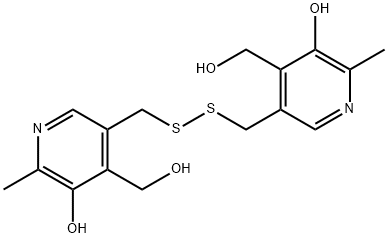Cyclohexyl mercaptan
Synonym(s):Cyclohexyl mercaptan;Hexahydrothiophenol
- CAS NO.:1569-69-3
- Empirical Formula: C6H12S
- Molecular Weight: 116.22
- MDL number: MFCD00001455
- EINECS: 216-378-7
- SAFETY DATA SHEET (SDS)
- Update Date: 2025-09-25 17:15:13

What is Cyclohexyl mercaptan?
Chemical properties
CLEAR LIQUID
Synthesis Reference(s)
Tetrahedron Letters, 35, p. 6057, 1994 DOI: 10.1016/0040-4039(94)88074-3
General Description
A colorless liquid with a strong disagreeable odor. Insoluble in water and less dense than water. Vapors heavier than air. Flash point near 50°F.
Air & Water Reactions
Highly flammable. Insoluble in water.
Reactivity Profile
Cyclohexyl mercaptan is incompatible with the following: Oxidizers, reducing agents, strong acids, alkali metals .
Health Hazard
May cause toxic effects if inhaled or absorbed through skin. Inhalation or contact with material may irritate or burn skin and eyes. Fire will produce irritating, corrosive and/or toxic gases. Vapors may cause dizziness or suffocation. Runoff from fire control or dilution water may cause pollution.
Fire Hazard
HIGHLY FLAMMABLE: Will be easily ignited by heat, sparks or flames. Vapors may form explosive mixtures with air. Vapors may travel to source of ignition and flash back. Most vapors are heavier than air. They will spread along ground and collect in low or confined areas (sewers, basements, tanks). Vapor explosion hazard indoors, outdoors or in sewers. Runoff to sewer may create fire or explosion hazard. Containers may explode when heated. Many liquids are lighter than water.
Flammability and Explosibility
Flammable
Safety Profile
Poison by intravenous route. Moderately toxic by ingestion, subcutaneous, and intramuscular routes. Mildly toxic by skin contact. Human systemic effects by inhalation: conjunctiva irritation and changes in the olfactory and respiratory systems. Has caused damage to kidneys, liver, and blood vessels in experimental animals. Experimental reproductive effects. Human mutation data reported. A severe eye irritant. Narcotic-like action. Flammable when exposed to heat or flame; can react with oxiduing materials. Iptes on contact with chromium trioxide. Violent reaction with HNO3. Incompatible with oxidants. To fight fire, use alcohol foam, foam, CO2, dry chemical. When heated to decomposition it emits acrid smoke and fumes. See also ALCOHOLS.
Properties of Cyclohexyl mercaptan
| Melting point: | -30 °C |
| Boiling point: | 158-160 °C (lit.) |
| Density | 0.95 g/mL at 25 °C (lit.) |
| vapor density | 4 (vs air) |
| vapor pressure | 10.3 mm Hg ( 37.7 °C) |
| refractive index | n |
| Flash point: | 110 °F |
| storage temp. | Flammables area |
| solubility | insoluble |
| form | liquid |
| pka | 10.96±0.20(Predicted) |
| color | Colorless to Almost colorless |
| Odor | sulfurous |
| explosive limit | 1.1%(V) |
| Water Solubility | insoluble |
| Sensitive | Air Sensitive/Stench |
| BRN | 1236342 |
| CAS DataBase Reference | 1569-69-3(CAS DataBase Reference) |
| NIST Chemistry Reference | Cyclohexanethiol(1569-69-3) |
| EPA Substance Registry System | Cyclohexanethiol (1569-69-3) |
Safety information for Cyclohexyl mercaptan
| Signal word | Danger |
| Pictogram(s) |
 Flame Flammables GHS02  Skull and Crossbones Acute Toxicity GHS06  Environment GHS09 |
| GHS Hazard Statements |
H226:Flammable liquids H302:Acute toxicity,oral H315:Skin corrosion/irritation H317:Sensitisation, Skin H331:Acute toxicity,inhalation H410:Hazardous to the aquatic environment, long-term hazard |
| Precautionary Statement Codes |
P210:Keep away from heat/sparks/open flames/hot surfaces. — No smoking. P273:Avoid release to the environment. P280:Wear protective gloves/protective clothing/eye protection/face protection. P301+P312:IF SWALLOWED: call a POISON CENTER or doctor/physician IF you feel unwell. P303+P361+P353:IF ON SKIN (or hair): Remove/Take off Immediately all contaminated clothing. Rinse SKIN with water/shower. |
Computed Descriptors for Cyclohexyl mercaptan
Cyclohexyl mercaptan manufacturer
New Products
Indole Methyl Resin tert-butyl 9-methoxy-3-azaspiro[5.5]undecane-3-carboxylate Boc-His(Boc)-OH 2-CTC Resin 4-Chloro-7-tosy1-7Hpyrrolo[2,3-d]pyrimidine 5,7-Dibromo-1H-indole 2,5-dichloro-N-hydroxy-4,6-dimethylpyridine-3-carboximidamide 2,2-Dimethoxy-7-azaspiro[3.5]nonane hydrochloride 4-chloromethyl-5-methyl-1,3-dioxol-2-one (DMDO-Cl) R-2-BENZYLOXY PROPIONIC ACID 1,1’-CARBONYLDIIMIDAZOLE 1,1’-CARBONYLDI (1,2-4 TRIAZOLE) N-METHYL INDAZOLE-3-CARBOXYLIC ACID 4-((2-hydroxyethyl)thio)benzoic acid 1-(TERT-BUTOXYCARBONYL)-2-PYRROLIDINONE Methyl 6-methylnicotinate 3-Pyridineacrylic acid tert-Butyl carbazate TETRAHYDRO-2H-PYRAN-3-OL 2-((4-morpholinophenylamino) (methylthio) methylene) malononitrile 3-(4-morpholinophenylamino)-5-amino-1H-pyrazole-4-carbonitrile 2,4-dihydroxybenzaldehyde 1,3-Diethyl-1,3-Diphenylurea Methyl 2-methylquinoline-6-carboxylateRelated products of tetrahydrofuran








You may like
-
 Cyclohexanethiol CAS 1569-69-3View Details
Cyclohexanethiol CAS 1569-69-3View Details
1569-69-3 -
 Cyclohexanethiol CAS 1569-69-3View Details
Cyclohexanethiol CAS 1569-69-3View Details
1569-69-3 -
 Pyridine 99.5% HPLC /UV SpectroscopyView Details
Pyridine 99.5% HPLC /UV SpectroscopyView Details
110-86-1 -
 Piperazine Spot supply, best priceView Details
Piperazine Spot supply, best priceView Details
110-85-0 -
 Dibutyl PhthalateView Details
Dibutyl PhthalateView Details
84-74-2 -
 Imidazole Spot supply, competitive priceView Details
Imidazole Spot supply, competitive priceView Details
288-32-4 -
 Octadecyl 3-(3,5-di-tert-butyl-4-hydroxyphenyl)propionate 98% (GC)View Details
Octadecyl 3-(3,5-di-tert-butyl-4-hydroxyphenyl)propionate 98% (GC)View Details
2082-79-3 -
 Thiourea 99% ARView Details
Thiourea 99% ARView Details
62-56-6
